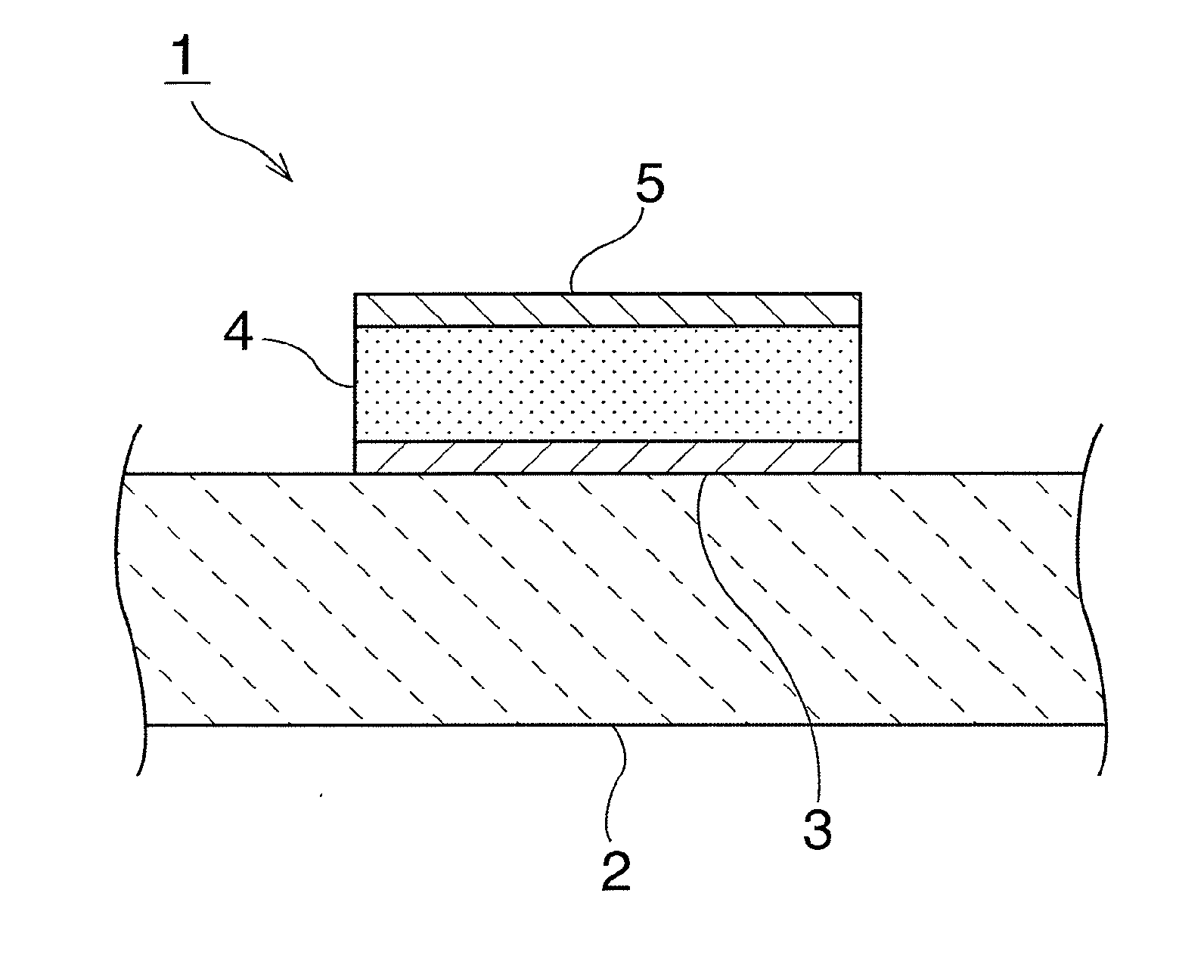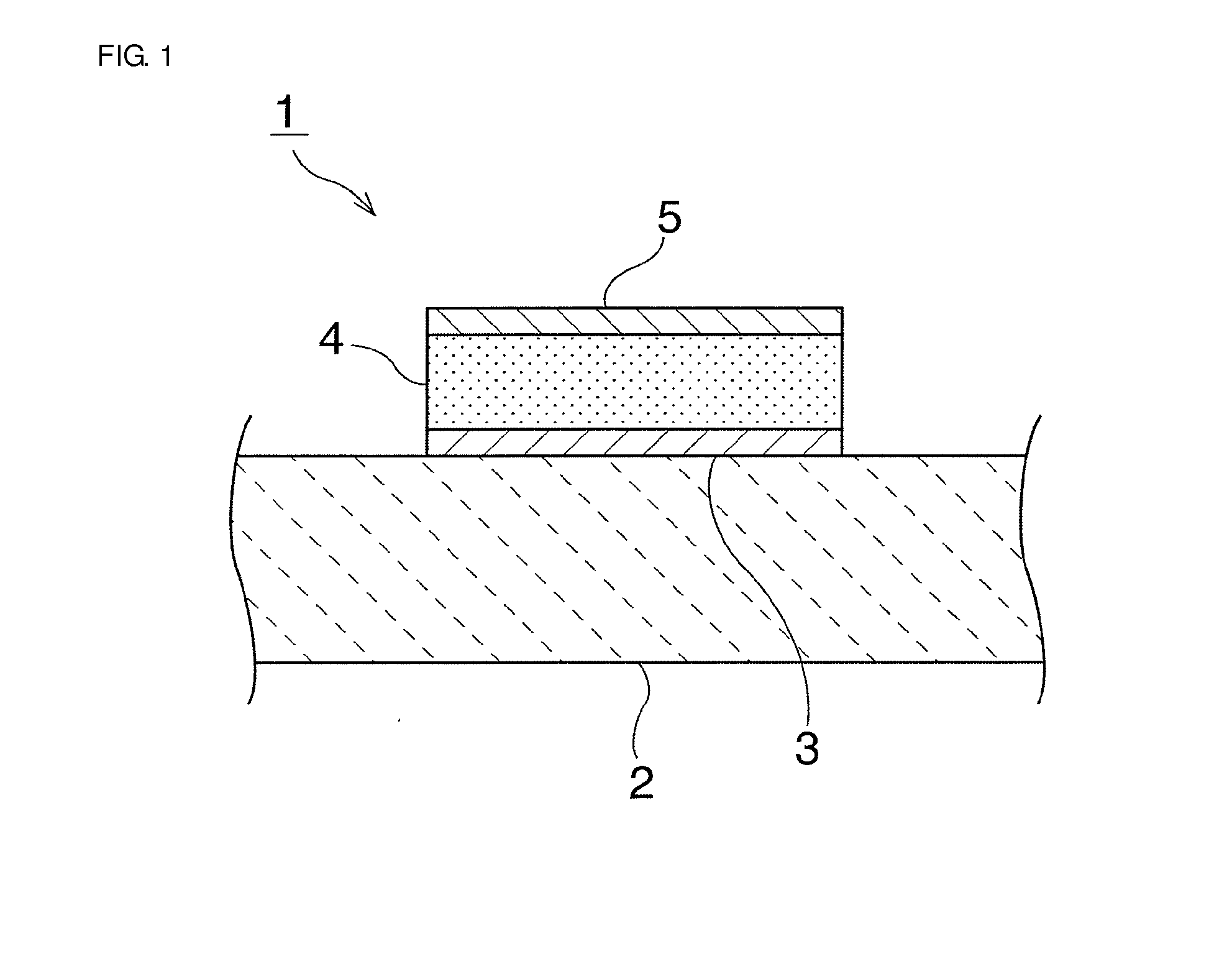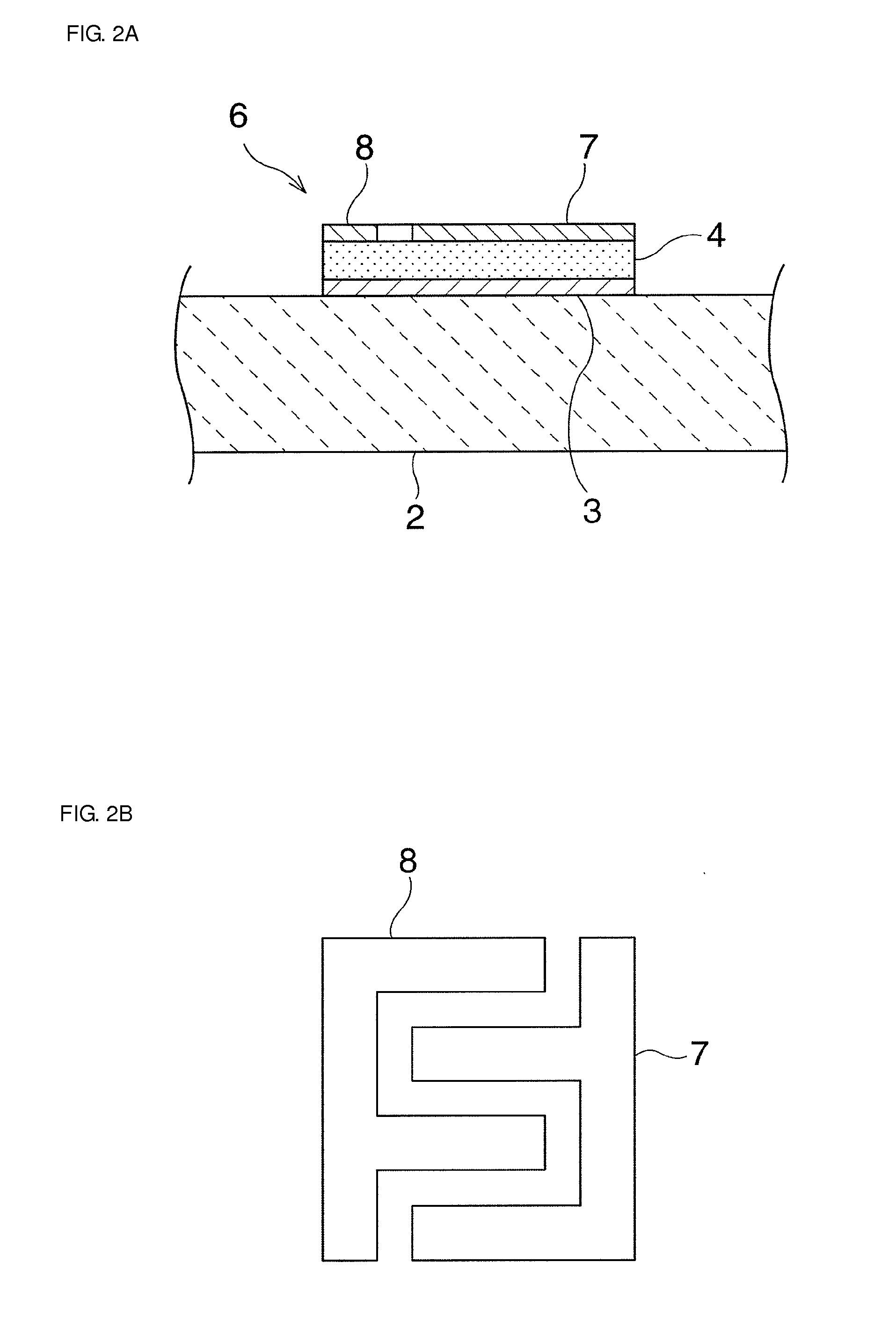Variable capacitance element and tunable filter
- Summary
- Abstract
- Description
- Claims
- Application Information
AI Technical Summary
Benefits of technology
Problems solved by technology
Method used
Image
Examples
example 1
[0083]A buffer layer 3 having a cubic crystal structure and formed of a Pt(111) film was deposited in a thickness of 100 nm on a piezoelectric substrate 2 formed of 15° Y cut LiNbO3 through sputtering using an Ar gas at a substrate temperature of 400° C. A dielectric layer 4 formed of BaSrTiO3 was then formed on the buffer layer 3 through sputtering at a temperature of 700° C. A second electrode 5 formed of Pt was then formed as a film in a thickness of 200 nm on the dielectric layer 4 through sputtering to obtain a variable capacitance element 1. Relationships between a dielectric constant and an applied voltage and between tan δ and the applied voltage in this variable capacitance element are illustrated in FIG. 3.
[0084]FIG. 3 clearly reveals that as the applied voltage changed, the relative dielectric constant and tan δ also changed. The rate of change in the relative dielectric constant, that is, the ratio of the highest relative dielectric constant to the lowest relative dielec...
example 2
[0088]Similarly to Example 1, but a Pt(200) film having a cubic crystal structure was deposited as the buffer layer 3. The deposition conditions were as follows. The buffer layer 3 was deposited in a film thickness of 100 nm through sputtering using an Ar gas at a substrate temperature of 700° C.
[0089]Other points were the same as in those in Example 1.
[0090]Relationships between a relative dielectric constant and an applied voltage and between tan δ and the applied voltage in the variable capacitance element obtained through Example 2 are illustrated in FIG. 4. FIG. 4 clearly reveals that the relative dielectric constant and tan δ changed more greatly than in Example 1 as the applied voltage changed. The rate of change in the relative dielectric constant, which is a ratio of the highest relative dielectric constant to the lowest relative dielectric constant within a range where the applied voltage is between −5 V and +5 V, was 4.17. Accordingly, it was discovered that a variable ra...
example 3
[0092]The buffer layer 3 having a cubic crystal structure and including the Pt(111) film was formed on the piezoelectric substrate that is formed of −1° Y cut LiNbO3, and a variable capacitance element was obtained thereafter in a similar manner to Example 1. The Pt(111) film was deposited in a film thickness of 100 nm through sputtering using an Ar gas at a substrate temperature of 400° C.
[0093]Relationships between a relative dielectric constant and an applied voltage and between tan δ and the applied voltage in the variable capacitance element obtained through Example 3 are illustrated in FIG. 8. FIG. 8 clearly reveals that as the applied voltage changed, the relative dielectric constant and tan δ also changed.
[0094]Further, the rate of change in the relative dielectric constant within a range where the applied voltage is between −5 V and +5 V was 3.34, which was greater than in Example 1 but smaller than in Example 2.
[0095]As for the variable capacitance element of Example 3, th...
PUM
 Login to View More
Login to View More Abstract
Description
Claims
Application Information
 Login to View More
Login to View More - R&D
- Intellectual Property
- Life Sciences
- Materials
- Tech Scout
- Unparalleled Data Quality
- Higher Quality Content
- 60% Fewer Hallucinations
Browse by: Latest US Patents, China's latest patents, Technical Efficacy Thesaurus, Application Domain, Technology Topic, Popular Technical Reports.
© 2025 PatSnap. All rights reserved.Legal|Privacy policy|Modern Slavery Act Transparency Statement|Sitemap|About US| Contact US: help@patsnap.com



